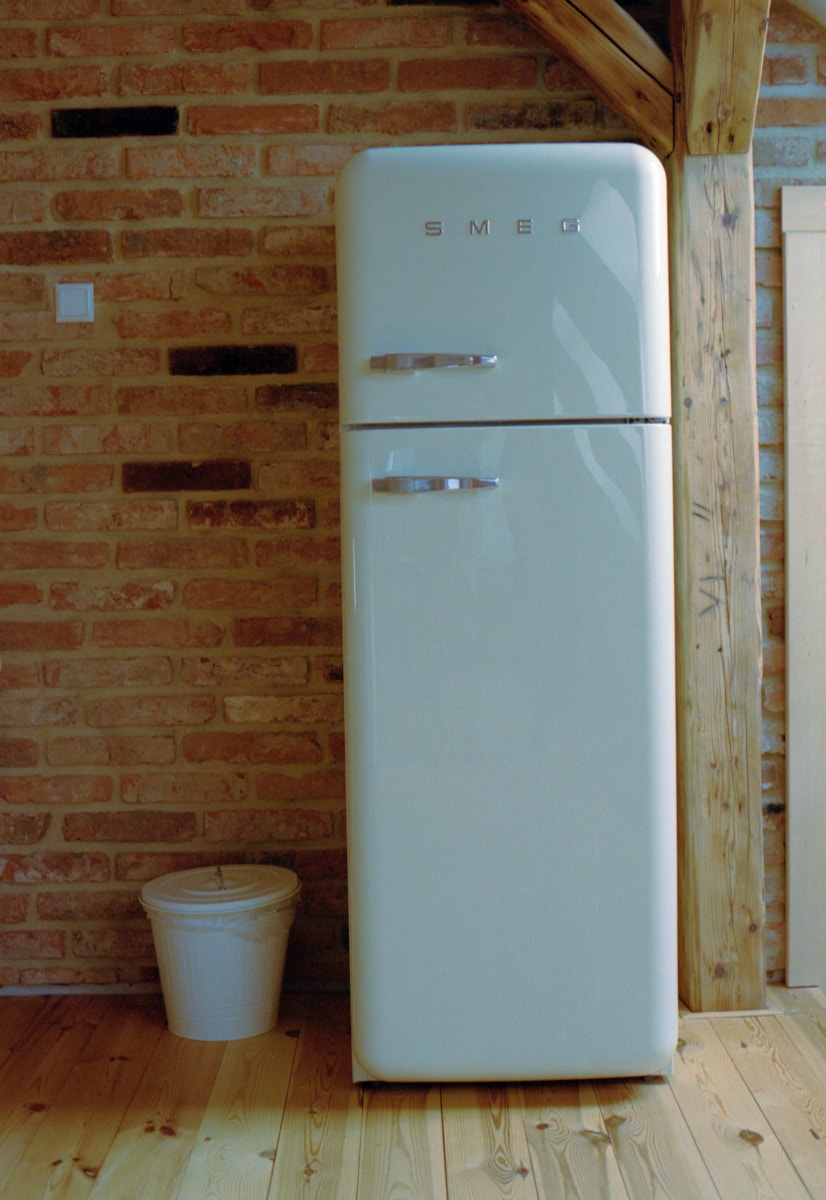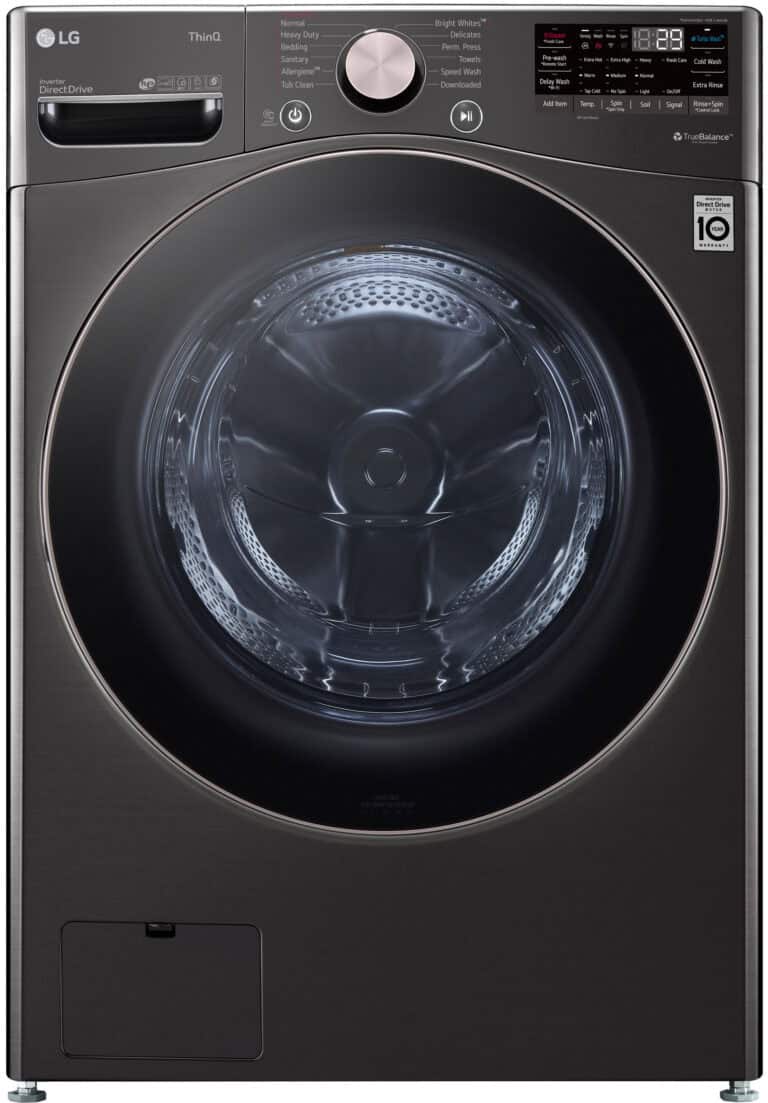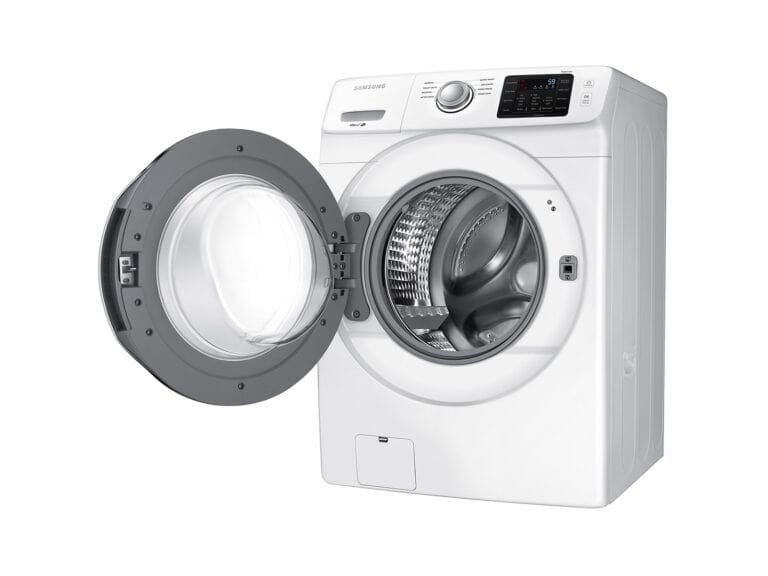
Many homeowners wonder if they can keep a refrigerator in their garage to create extra food storage space. The short answer is yes, but there are several important factors to consider before moving that fridge. You can keep a fridge in the garage, but you should first consider the temperature fluctuations in your garage, as standard refrigerators aren’t designed for extreme hot or cold environments.
If you’re thinking about garage refrigerator storage, it’s worth noting that older refrigerator models might actually perform better in garage conditions than newer ones. This is because many modern refrigerators have temperature sensors that can malfunction in uncontrolled environments. Some manufacturers offer special “garage-ready” refrigerators designed to withstand temperature fluctuations.
🧊 Can You Keep a Fridge in Your Garage?
Yes, you can — but with precautions.
A refrigerator can work in a garage, but only if the environment stays within its safe operating temperature range. Most standard refrigerators are designed to function best between 50°F and 110°F (10°C–43°C) (source: CYCookery).
If your garage regularly gets colder or hotter than that, your fridge may not run properly — or could even get damaged.
⚠️ The Risks of Extreme Temperatures
1. Cold Temperatures
- When the garage gets too cold (below 40°F / 4°C), the fridge’s thermostat may think it doesn’t need to run.
- This can stop the compressor from cycling on, meaning the freezer section warms up and food can thaw (source: Sears Home Services).
- Prolonged cold can also cause oil in the compressor to thicken, straining the motor.
2. Hot Temperatures
- In hot garages (above 100°F / 38°C), the compressor has to work overtime to keep things cold.
- This leads to higher energy bills, faster wear, and possible compressor failure (source: Fridge.com).
🧰 How to Safely Keep a Fridge in the Garage
1. Check the Temperature Range
Keep a thermometer in your garage to monitor conditions.
If temperatures often fall outside 50°F–110°F, consider one of these solutions:
- Garage-Ready Refrigerator: These models are built to handle extreme temperatures, often from 0°F–110°F.
- Temperature-Controlled Garage: Add insulation or a small space heater to stabilize the environment (source: ApplianceUpdate).
2. Choose the Right Location
- Place the fridge away from direct sunlight and not against exterior walls if possible.
- Keep at least a few inches of clearance around it for ventilation.
3. Insulate and Protect
- Add weather stripping around garage doors and walls to reduce temperature swings.
- In winter, you can install a garage refrigerator heater kit — a small heating coil that keeps the thermostat working properly (source: AppliancesHeaven).
4. Maintain Regularly
- Clean condenser coils twice a year.
- Check door seals for cracks or leaks.
- Keep the fridge at least half full — it helps maintain consistent internal temperature.
💡 Best Practices Summary
| Condition | What to Do |
|---|---|
| Cold Garage (<50°F) | Use a heater kit or insulated enclosure |
| Hot Garage (>100°F) | Improve ventilation or use a garage-rated fridge |
| Uninsulated Garage | Add insulation or move fridge to a more stable area |
| Occasional Use | Unplug and clean fridge when not needed for long periods |
✅ Bottom Line
You can keep a refrigerator in your garage — but only if you manage the temperature and placement.
If your garage isn’t insulated or experiences extreme weather, a garage-ready refrigerator or temperature-controlled setup is the best solution for reliable performance and energy efficiency.
Key Takeaways
- Standard refrigerators can work in garages but may struggle in extreme temperatures affecting both efficiency and food safety.
- “Garage-ready” refrigerators are specifically designed to handle temperature fluctuations found in uncontrolled environments.
- Regular maintenance and proper setup are essential for extending the lifespan of any garage refrigerator.
Assessing Suitability for a Garage Fridge
Before placing a refrigerator in your garage, you need to evaluate both your space and the appliance itself. Temperature fluctuations and environmental factors play crucial roles in determining whether a garage setup will work efficiently.
Understanding the Garage Environment
The garage environment differs significantly from your kitchen, presenting unique challenges for refrigerators. Temperature is the most critical factor – most standard refrigerators are designed to operate in climate-controlled environments between 60-85°F.
An unheated garage can reach freezing temperatures in winter or excessive heat in summer. When temperatures drop below 50°F, the refrigerator’s thermostat may not trigger the compressor to run, potentially causing frozen foods to thaw.
Humidity and dust also affect performance. Garages typically have higher dust levels and more humidity fluctuations than indoor spaces, which can strain the refrigerator’s components.
Before installation, check:
- Temperature range throughout the year
- Humidity levels
- Available space (including ventilation area)
- Proximity to a dedicated electrical outlet
Benefits of a Garage Fridge
A garage refrigerator offers numerous practical advantages for many households. The extra cold storage space allows families to bulk purchase food, reducing shopping trips and potentially saving money.
For entertainers, a second refrigerator provides dedicated space for beverages, party platters, or seasonal items. This separation keeps the main kitchen refrigerator organized and less crowded.
Popular uses for garage refrigerators:
- Storing bulk purchases and overflow items
- Keeping beverages cold for gatherings
- Seasonal food storage (holiday meals, garden harvests)
- Dedicated space for specific dietary needs
Interestingly, older refrigerator models often perform better in garage settings than newer ones. Their simpler mechanical thermostats tend to be more forgiving in variable temperature environments.
Choosing the Right Fridge
Selecting the appropriate refrigerator for your garage requires considering temperature resilience, special features, and size requirements. A garage-ready model will function properly despite temperature fluctuations that regular kitchen refrigerators might struggle with.
Types of Fridges Suitable for a Garage
Not all refrigerators can handle the temperature extremes found in most garages. Garage-ready fridges are specifically designed to operate efficiently in environments that get both extremely cold and hot. These specialized models have enhanced insulation and modified thermostats to maintain consistent internal temperatures regardless of external conditions.
Interestingly, older refrigerator models sometimes perform better in garage environments than newer ones, as they were built with less sophisticated temperature sensors. Some manufacturers offer “garage kits” that can modify standard refrigerators for garage use.
Freezerless refrigerators are another excellent option for garages, as they don’t have the same temperature-sensing issues that combination fridge-freezers do during winter months.
Features to Consider
When selecting a garage refrigerator, temperature tolerance should be your primary consideration. Look for models that can withstand temperatures up to 110°F while still functioning efficiently.
Energy efficiency is crucial for garage refrigerators since they often work harder than kitchen models. Look for ENERGY STAR ratings to minimize electricity costs.
Important features to look for:
- Heavy-duty compressors
- Enhanced insulation
- Adjustable temperature controls
- Humidity controls (for storing produce)
- Durable shelving
- Lockable doors (for safety)
A refrigerator with adjustable or removable shelving provides flexibility for storing bulky items like beverage cases or large food containers often kept in secondary refrigerators.
Average Capacity and Size
The average garage refrigerator typically ranges from 15 to 22 cubic feet, though compact models may be as small as 10 cubic feet. Full-sized models like the recommended LG LHTNS2403S offer larger capacities for families who need substantial extra storage.
When determining the appropriate size, consider:
- Available floor space in your garage
- Clearance for door swing
- Distance from walls for ventilation
- Height of shelving or cabinetry above
Top-freezer models typically provide the most efficient use of space for garage settings. They offer a good balance between storage capacity and footprint, with an average width of 28-33 inches.
Upright freezer-only units require approximately 2-3 square feet of floor space and are ideal for storing bulk frozen items, while side-by-side models need more width but offer convenient organization options.
Installation and Setup
Setting up a refrigerator in your garage requires careful planning to ensure proper operation and energy efficiency. The right placement, adequate ventilation, and correct electrical setup are essential for your garage fridge to function optimally.
Proper Placement
When installing a garage refrigerator, location matters significantly. Place the unit away from direct sunlight and heat sources like water heaters or dryers. This prevents the compressor from working overtime.
Choose a spot on level ground to prevent door alignment issues. If your garage floor is uneven, use shims to level the refrigerator properly. This ensures doors seal correctly and prevents energy waste.
For temperature consistency, position the fridge against an interior wall rather than an exterior one. This provides more stable temperatures, especially in extremely cold climates.
Leave at least 1-2 inches of space between the refrigerator and the wall. This prevents vibration noise and allows for easier cleaning behind the unit.
Ensuring Good Ventilation
Refrigerators need proper airflow to function efficiently. Allow 2-3 inches of clearance on all sides and 1-2 inches at the back for heat dissipation. For top-opening freezers, leave at least 12 inches of clearance above.
Never enclose a refrigerator in cabinetry unless it’s specifically designed for built-in installation. Poor ventilation can cause the compressor to overheat and fail prematurely.
Keep the refrigerator’s condenser coils clean by vacuuming them every 3-6 months. Dust buildup reduces efficiency, especially in garage environments that tend to be dustier than kitchens.
If your garage gets extremely hot in summer, consider installing a small fan near the fridge to improve air circulation. This helps the unit maintain proper cooling temperatures during hot weather conditions.
Electrical Requirements
Most refrigerators require a dedicated 15 or 20-amp circuit. Using an extension cord is strongly discouraged by home improvement experts as it can create a fire hazard and void manufacturer warranties.
Install a GFCI (Ground Fault Circuit Interrupter) outlet for safety, especially in garage settings where moisture might be present. This protects against electrical shock in damp conditions.
Consider a surge protector designed specifically for appliances to guard against power fluctuations. This is especially important in areas with unstable power supply or frequent storms.
For areas with extreme temperature swings, a garage refrigerator kit may be necessary. These kits include heaters that keep the refrigerator’s internal components from freezing when garage temperatures drop below 40°F.
Check your refrigerator’s manual for specific electrical requirements before installation. Most standard refrigerators require 110-120 volts, while some larger models may need 220-volt service.
Maintenance and Upkeep
Keeping a garage refrigerator running efficiently requires regular care and attention to specific maintenance tasks. Proper upkeep not only extends the life of your appliance but also helps maintain energy efficiency in challenging garage environments.
Routine Cleaning and Defrosting
Regular cleaning of your garage refrigerator is essential for optimal performance. Every three months, unplug the unit and wipe down interior surfaces with a solution of baking soda and water to prevent odors and bacterial growth.
The refrigerator coils need special attention in garage environments. Routinely vacuum the coils to remove dust and debris that can reduce cooling efficiency. This simple maintenance task can significantly lower energy consumption and extend the life of your appliance.
For manual defrost models, plan to defrost completely when frost buildup reaches ¼ inch thickness. Many garage-ready refrigerators require manual defrosting once or twice a year. During defrosting:
- Remove all food items
- Turn off the refrigerator
- Place towels around the base to catch melting water
- Allow frost to melt naturally—never use sharp objects
Addressing Common Issues
Temperature fluctuations are common problems with garage refrigerators. In winter months, freezer sections may stop working properly when external temperatures drop. Installing a garage refrigerator kit can solve this issue by helping the thermostat read temperatures correctly.
Excessive condensation often occurs in humid garage environments. Check door seals regularly by closing the door on a dollar bill—if it pulls out easily, the seal needs replacement. Poor seals force the compressor to work harder, increasing energy costs.
Unusual noises typically indicate components working harder than normal. In garage settings, refrigerators must contend with more extreme temperatures, causing increased compressor activity. Ensure proper ventilation by maintaining at least 2-3 inches of clearance on all sides.
When to Consult an Appliance Technician
Professional help becomes necessary when your garage refrigerator shows signs of serious malfunction. Call an appliance technician if you notice electrical issues such as flickering lights, burning smells, or if the unit trips circuit breakers.
Persistent cooling problems despite regular maintenance warrant professional attention. If food isn’t staying cold enough (above 40°F in refrigerator sections) or freezer items repeatedly thaw, contact a technician immediately.
Compressor issues are particularly problematic in garage settings. Signs include constant running, excessive heat from the back of the unit, or unusual cycling patterns. These symptoms often indicate the refrigerator is struggling against extreme garage temperatures.
Most garage refrigerators have a shorter lifespan than indoor models, typically lasting several years less due to operating in harsher conditions. Regular professional maintenance can help maximize this lifespan.
Seasonal Considerations
Keeping a refrigerator in your garage requires attention to how changing seasons affect your appliance’s performance. Temperature fluctuations throughout the year can impact efficiency and potentially damage important components.
Adjusting for Temperature Fluctuations
During summer months, garage temperatures can soar well above 100°F in many regions. This extreme heat forces the refrigerator to work much harder to maintain cool internal temperatures. The appliance will consume more electricity and wear out faster than one kept in climate-controlled conditions.
In winter, the opposite problem occurs. When garage temperatures drop below 50°F, the refrigerator’s thermostat may become confused. This confusion happens because the thermostat can’t detect a significant enough difference between the garage temperature and the desired fridge temperature.
This can lead to strange behavior where frozen foods thaw out in the freezer section, while fresh foods in the refrigerator section might freeze. Older refrigerator models often handle these temperature extremes better than newer, more sensitive units.
Protecting the Compressor in Extreme Conditions
The compressor is the heart of your refrigerator and requires special protection in garage environments. In high temperatures, ensure adequate airflow around the unit by keeping several inches of clearance on all sides. This prevents overheating and reduces strain on the compressor.
For winter protection, consider a garage refrigerator kit which adds a heater to keep the compressor and cooling mechanisms working properly when ambient temperatures drop. Without this protection, the oil in the compressor can thicken, causing startup failures.
If your refrigerator has a water line for an ice maker, take precautions to prevent freezing. Drain water lines properly if you plan to turn the refrigerator off during cold months to prevent burst pipes and water damage.
Maximizing Efficiency and Performance
Keeping your garage refrigerator running efficiently requires proper setup and maintenance. The right approach can save money on electricity bills while ensuring your food stays at safe temperatures.
Energy Saving Tips
Place your garage refrigerator away from heat sources like water heaters or dryer vents. This helps it run more efficiently without working overtime to stay cool. Regulating the garage temperature is ideal for peak performance.
Consider using a thermal blanket on your fridge during extreme temperature seasons. This provides extra insulation and helps maintain consistent internal temperatures.
Clean the condenser coils at least twice a year. Dust and debris make your refrigerator work harder and use more electricity.
Keep your garage fridge at least 75% full for better efficiency. Food and drinks help maintain temperature when the door opens, but don’t overcrowd shelves as this restricts air circulation.
Quick Tips:
- Set the temperature between 35-38°F for refrigerator sections
- Use a separate thermometer to verify temperatures
- Check door seals regularly for cracks or wear
Utilizing Garage Fridge for Specific Needs
A garage refrigerator works best when used strategically rather than as a duplicate of your kitchen fridge. Reserve your garage refrigerator for beverages and non-perishable items, especially during summer months when temperatures fluctuate more dramatically.
Create dedicated zones in your fridge for different items. For example, designate the bottom shelf for bulk beverages and upper shelves for condiments or meal prep containers.
For entertaining, stock your garage fridge with party supplies and pre-prepped foods. This prevents multiple trips to the kitchen and keeps the main refrigerator organized.
Consider installing a refrigerator with a wider operating temperature range specifically designed for garage use. These units can handle greater temperature fluctuations while maintaining efficiency.
Frequently Asked Questions
Keeping a refrigerator in the garage requires special considerations for temperature, safety, and maintenance. Many homeowners have common questions about the proper way to use refrigerators in garage environments.
What are the considerations for operating a refrigerator in varying garage temperatures?
Garage temperatures can fluctuate dramatically with the seasons, affecting how your refrigerator operates. In very cold temperatures, the freezer section may stop running because the thermostat can’t detect when to turn on.
In hot weather, your refrigerator must work harder to maintain cool temperatures, potentially increasing energy costs and shortening the appliance’s lifespan. Older refrigerator models generally handle garage conditions better than newer ones.
Regular maintenance becomes even more important in garage settings due to increased exposure to dust and dirt.
Is a ‘garage ready’ refrigerator necessary for safe operation in a garage environment?
Yes, a garage-ready refrigerator is highly recommended for garage use. These specialized appliances are designed to operate safely in environments with wider temperature ranges.
Standard refrigerators may experience freezer failure in colder months, causing frozen foods to thaw. Garage-ready models have additional insulation and modified thermostats to prevent this issue.
Without a garage-ready model, you risk food spoilage, increased energy consumption, and potential mechanical failures.
How can one protect a refrigerator from extreme heat when placed in a garage?
Position the refrigerator away from direct sunlight and heat sources like water heaters or dryers. Allow adequate air circulation by keeping at least 2-3 inches of space around the unit.
Consider installing insulation in your garage walls or ceiling to help moderate extreme temperatures. Using a fan to improve air circulation around the refrigerator can also help during hot summer months.
Clean the condenser coils regularly to prevent dust buildup, which makes the refrigerator work harder. Monthly cleaning is recommended for garage refrigerators.
What temperature ranges are safe for keeping a refrigerator in the garage?
Most refrigerators function optimally when the ambient temperature stays between 50°F and 85°F (10°C to 29°C). Temperatures outside this range can cause operational issues.
Garage-ready models typically can handle temperatures from 38°F to 110°F (3°C to 43°C). Below 38°F, even garage-ready freezers may experience issues with temperature regulation.
Extreme heat above 110°F forces refrigerators to work constantly, potentially causing compressor failure and significantly reducing the appliance’s lifespan.
Are there any specific risks associated with unplugging a garage refrigerator during winter months?
Unplugging a refrigerator during winter can lead to moisture accumulation inside the unit. This moisture may damage electrical components when the appliance is plugged back in.
Sudden temperature changes from unplugging and replugging can stress mechanical parts. The gaskets and seals may also deteriorate faster when not in regular use.
If planning to unplug a garage refrigerator, it should be thoroughly cleaned, dried, and covered with a plastic sheet to prevent dust accumulation. The door should remain slightly open to prevent odors and mold.
Is it advisable to use standard household refrigerators in an uninsulated garage?
Standard household refrigerators are not designed for uninsulated garage environments. They lack the necessary temperature regulation systems to handle extreme conditions.
Regular refrigerators in garages often face premature component failure and dramatically increased energy consumption. The freezer section is particularly vulnerable to malfunction in cold temperatures.
For uninsulated garages, investing in a garage-ready refrigerator or adding insulation to the garage space is strongly recommended to protect your appliance and its contents.





